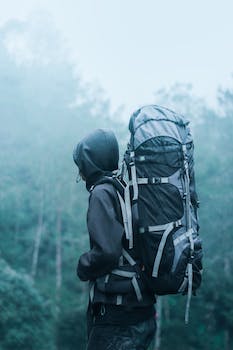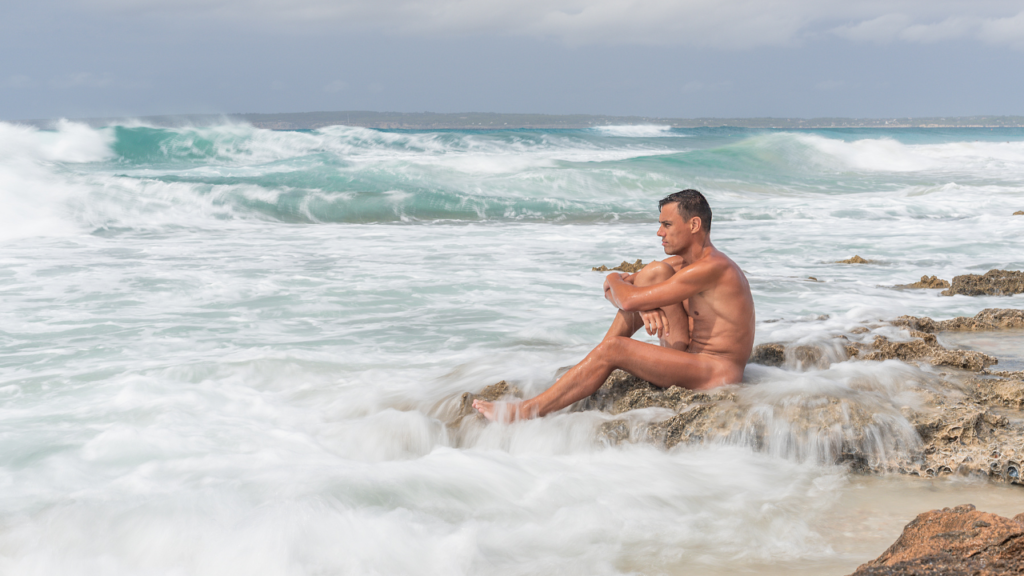-
Table of Contents
“Hike with Ease: Conquer the Trails Without the Pain!”
Hiking is a great way to get out and explore nature, but it can also be a source of pain and discomfort. Hiking can cause a variety of painful side effects, such as blisters, sore muscles, and joint pain. Fortunately, there are ways to reduce the pain and discomfort associated with hiking. In this article, we will discuss the painful side effects of hiking and provide tips for relief. We will also discuss how to prevent these side effects in the first place. By following these tips, you can enjoy your hikes without the pain and discomfort.
How to Prepare for a Hike to Avoid Painful Side Effects

Hiking is a great way to get out and explore nature, but it can also be a source of pain and discomfort if you’re not prepared. Here are some tips to help you prepare for a hike and avoid any painful side effects.
1. Wear the right shoes. Make sure you have a good pair of hiking boots that fit properly and provide adequate support. This will help prevent blisters and sore feet.
2. Pack light. Don’t overload your backpack with unnecessary items. The heavier your pack, the more strain it will put on your back and shoulders.
3. Stretch before you start. Take a few minutes to stretch your legs, back, and shoulders before you start your hike. This will help prevent muscle strain and soreness.
4. Stay hydrated. Bring plenty of water and snacks to keep your energy levels up. Dehydration can lead to headaches and fatigue.
5. Take breaks. Don’t push yourself too hard. Take regular breaks to rest and refuel.
6. Listen to your body. If you start to feel pain or discomfort, take a break and assess the situation. Don’t push yourself too hard.
Following these tips will help you prepare for a hike and avoid any painful side effects. Have fun and enjoy the outdoors!
Common Causes of Painful Side Effects from Hiking and How to Avoid Them
Hiking is a great way to get out and explore nature, but it can also be hard on your body. Painful side effects from hiking are common, but there are ways to avoid them. Here are some of the most common causes of pain and how to avoid them.
1. Blisters: Blisters are one of the most common causes of pain when hiking. To avoid them, make sure you wear the right shoes. Choose shoes that fit properly and are designed for the terrain you’ll be hiking on. Also, make sure to wear socks that wick away moisture and keep your feet dry.
2. Muscle soreness: Hiking can be hard on your muscles, especially if you’re not used to it. To avoid soreness, make sure to stretch before and after your hike. Also, take breaks throughout your hike to give your muscles a chance to rest.
3. Sunburn: Sunburns can be painful and can even lead to skin cancer. To avoid them, make sure to wear sunscreen and a hat. Also, try to stay in the shade as much as possible.
4. Dehydration: Dehydration can cause headaches, fatigue, and other unpleasant symptoms. To avoid it, make sure to drink plenty of water before, during, and after your hike.
By following these tips, you can avoid the most common causes of pain when hiking. Remember to wear the right shoes, stretch, wear sunscreen, and stay hydrated. With a little preparation, you can enjoy your hike without any painful side effects.
The Benefits of Stretching Before and After a Hike to Reduce Painful Side Effects
Hiking is a great way to get out and explore nature, but it can also be hard on your body. Stretching before and after a hike can help reduce the pain and soreness that can come with it. Here are some of the benefits of stretching before and after a hike:
1. Improved Flexibility: Stretching before and after a hike can help improve your flexibility, which can help reduce the risk of injury. Stretching can also help you move more freely and comfortably during your hike.
2. Reduced Muscle Soreness: Stretching before and after a hike can help reduce muscle soreness. This can help you feel better after a long hike and reduce the risk of injury.
3. Improved Circulation: Stretching can help improve circulation, which can help reduce fatigue and improve your overall performance.
4. Improved Balance: Stretching can help improve your balance, which can help you stay steady on uneven terrain.
5. Improved Posture: Stretching can help improve your posture, which can help reduce back pain and improve your overall comfort.
Stretching before and after a hike can help reduce the pain and soreness that can come with it. It can also help improve your flexibility, reduce muscle soreness, improve circulation, improve balance, and improve posture. So, make sure to take a few minutes to stretch before and after your next hike to help reduce the pain and soreness that can come with it.
How to Choose the Right Shoes for Hiking to Minimize Painful Side Effects
Hiking is a great way to get out and explore nature, but it can also be hard on your feet. Choosing the right shoes for hiking is essential if you want to minimize the risk of painful side effects. Here are some tips to help you pick the perfect pair of hiking shoes:
1. Consider the terrain. Different types of terrain require different types of shoes. If you’re hiking on rocky trails, you’ll need a pair of shoes with good grip and support. If you’re hiking on softer terrain, you’ll need a pair of shoes with good cushioning.
2. Look for breathability. Your feet will get hot and sweaty when you’re hiking, so it’s important to choose a pair of shoes that are breathable. Look for shoes made from mesh or other breathable materials.
3. Choose the right fit. Make sure the shoes fit your feet properly. They should be snug but not too tight. You should also make sure there’s enough room in the toe box for your toes to move around.
4. Look for good arch support. If you have flat feet or high arches, you’ll need a pair of shoes with good arch support. Look for shoes with built-in arch support or insoles that can provide extra cushioning and support.
5. Break them in. Before you hit the trails, make sure to break in your shoes. Wear them around the house for a few days to make sure they’re comfortable and don’t cause any blisters or other issues.
By following these tips, you can find the perfect pair of shoes for your next hiking adventure. With the right shoes, you can minimize the risk of painful side effects and enjoy your time in nature.
Q&A
Q: What are some of the most common side effects of hiking?
A: The most common side effects of hiking include muscle soreness, fatigue, blisters, and dehydration. Other potential side effects include sunburn, insect bites, and joint pain.
Q: What can I do to prevent or reduce the pain associated with hiking?
A: To prevent or reduce the pain associated with hiking, make sure to wear the right clothing and footwear for the terrain, stay hydrated, and take regular breaks. Additionally, stretching before and after your hike can help reduce muscle soreness.
Q: What should I do if I experience pain while hiking?
A: If you experience pain while hiking, stop and rest for a few minutes. If the pain persists, take an over-the-counter pain reliever such as ibuprofen or acetaminophen. If the pain is severe, seek medical attention.
Q: Are there any other tips for reducing the pain associated with hiking?
A: Yes, other tips for reducing the pain associated with hiking include using a foam roller to massage sore muscles, applying ice or heat to sore areas, and using a topical pain reliever such as a menthol-based cream. Additionally, make sure to wear supportive socks and shoes to help reduce blisters and joint pain.Hiking can be a great way to get out and enjoy nature, but it can also be a source of pain and discomfort if not done properly. Taking the proper precautions and using the right gear can help to reduce the risk of pain and injury. Additionally, stretching before and after hikes, staying hydrated, and taking breaks can help to reduce the risk of pain and discomfort. With the right preparation and knowledge, hikers can enjoy the outdoors without the painful side effects.
![]()










